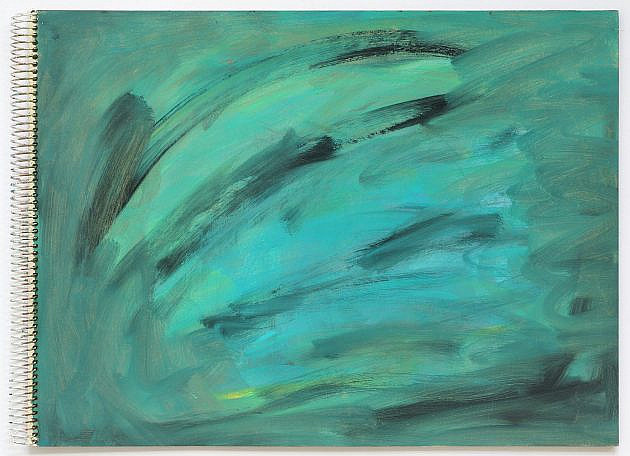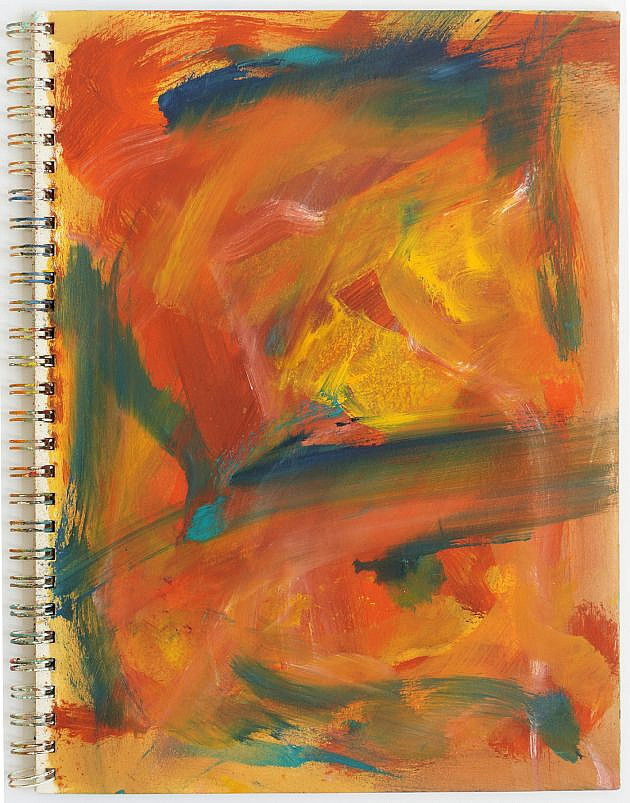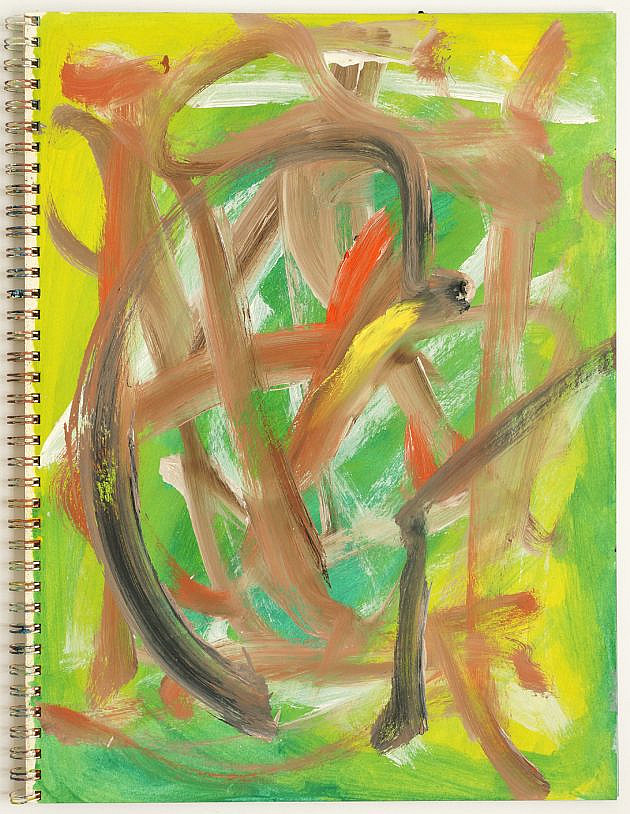Die Malbücher entstehen aus den Blocks, die Jochims vor vielen Jahren für die Zeichnungen anfertigen ließ. Die verworfenen Zeichnungen bilden dann die Substanz des Malbuches.
» mehr …
Die Malbücher waren früher in den Malgesten sehr nervös und aggressiv, das hat sich im Laufe der Jahre beruhigt, und die Farbe bewegt sich heute wieder zwischen Mitte und Rand, wie schon einmal in den 1960er Jahren des 20. Jahrhunderts.
Die Malbücher sind zum Umblättern gedacht und stellen eine andere Bildform dar als das Bild an der Wand. Sie erzählen Geschichten der Farben – wie ein Roman. Aber sie sind nicht aus Worten, sondern aus Farben gemacht.
Es entsteht immer eine Doppelseite, die den zwei Augen entspricht. Und die Wahl der Farben entspricht ganz und gar der momentanen Stimmung. Das ist eine sehr andere Bildform als die der dauerhaften Bilder, die an der Wand hängen. Das transitorische Element des Umblätterns entspricht der Erfahrung des Wandels.
The coloring books are created from the blocks that Jochims had made many years ago for the drawings. The discarded drawings then form the substance of the coloring book.
» more …
The coloring books used to be very nervous and aggressive in their painting gestures, but this has calmed down over the years, and the color now moves again between the middle and the edge, as it once did in the 1960s. The coloring books are meant to be turned over and represent a different pictorial form than the picture on the wall. They tell stories of colors – like a novel. But they are not made of words, but of colors. There is always a double page that corresponds to the two eyes. And the choice of colors corresponds entirely to the mood of the moment. This is a very different pictorial form from the permanent pictures that hang on the wall. The transitory element of turning the page corresponds to the experience of change.



















































